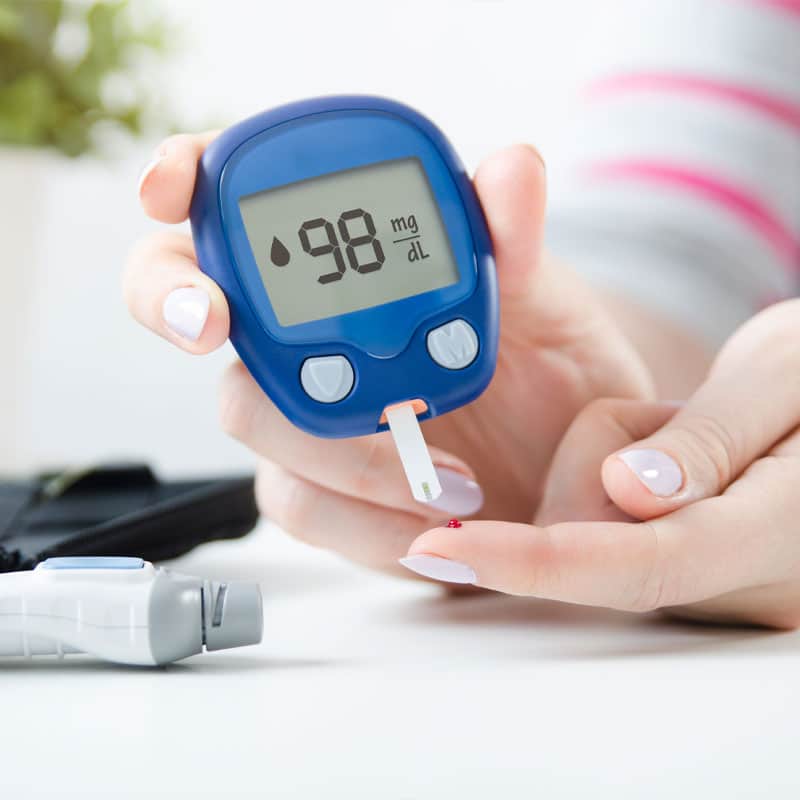Cholesterol is a subject that has been talked about in the news, commercials, the medical community, and among friends and family members for years. However, many people do not understand the difference between LDL vs HDL cholesterol. Many people think that cholesterol is bad; however, it is vital to your health. Cholesterol is used for several different functions of the body such as vitamin D production, hormone creation, optimal digestion, and more. Although cholesterol can be beneficial to the body, it can also damage vital organs and lead to a number of health issues.

Where Does Cholesterol Come From?
Your body gets cholesterol in two different ways. First, the liver creates the cholesterol it needs for optimal health. Cholesterol is also found in animal-sourced foods like dairy products, poultry, and meat.
Cholesterol is housed in lipoproteins. These lipoproteins transport cholesterol through the body. One of the factors for determining if it is good or bad cholesterol is the density of the lipoprotein and where the cholesterol is transported to in the body.
What Is LDL Cholesterol?
Medical terms can be confusing. However, it is important to know and understand them. Let’s delve into cholesterol and learn what is LDL cholesterol. Simply put, it is low-density lipoproteins.
Is LDL good or bad? LDL is considered to be bad cholesterol. Low-density lipoproteins transport cholesterol into the arteries. As the cholesterol is transported into the arteries, it can build up. This build-up is called atherosclerosis. Atherosclerosis hardens the arteries and increases the risk of developing a blood clot against the side of the artery.
If the blood clot breaks away from the side of the blood vessel, it can travel through the bloodstream. If the blood clot reaches the heart, it can cause a heart attack. If it reaches the brain, it can cause a stroke. Additionally, excess cholesterol buildup in the blood vessels can reduce the blood flow to major organs in the body. When blood flow is reduced, oxygen is reduced. When this occurs, the risk of peripheral arterial disease or kidney disease increases.
What Is HDL Cholesterol?

Now that you understand what LDL cholesterol is and how it impacts your health, it is time to learn about HDL cholesterol. What is HDL cholesterol? It is an abbreviation for the term high-density lipoproteins.
Is HDL good or bad? HDL is considered to be good cholesterol. High-density lipoproteins transport cholesterol to the liver where it is used to create hormones and vitamins. Any excess cholesterol is then removed from the body to reduce the risk of a variety of health conditions.
When excess cholesterol is moved from the body, the risk of illness and disease is minimized. Your kidney health will improve. Your risk of a heart attack or stroke will also be decreased. Knowing how to lower your LDL levels and how to increase HDL levels can improve your health.
Know Your Cholesterol Levels
Before we discuss how to lower your LDL levels, you must first learn what your total cholesterol is. The average normal cholesterol level for adults is under 200. According to the CDC, approximately ninety-four million American adults have high than normal total cholesterol levels.
If you have higher than normal cholesterol readings, you are at an increased risk of developing health problems, which is why it is important to understand the importance of knowing your LDL vs HDL readings. Knowing your cholesterol readings is the first step toward a reduced risk of disease and even death. In addition to this, you should know your LDL HDL ratio as it can be used as an indicator of your overall health.
LDL vs HDL Ratio
A lipid panel measures your total cholesterol, your HDL, your LDL, and your triglycerides levels. These numbers are used to determine the amount of fat in the blood and your overall health risk.
Your LDL HDL ratio is calculated by dividing your total cholesterol by your HDL readings. The higher the ratio, the higher your risk of coronary heart disease. It is recommended that your ratio be below 5:1. If your total cholesterol is 200 and your HDL reading is 50, you would divide 200 by 50, resulting in 40, or a 4:1 ratio. This means that your ratio would be considered good, and your risk of cardiovascular disease would be reduced.
Causes of High Cholesterol

Several things can impact your cholesterol, including your diet and lifestyle choices. When it comes to LDL vs HDL, you want to understand how each can impact your readings and your overall health. The causes of high cholesterol include:
- Obesity – If you are overweight or obese, your risk of high cholesterol and heart disease increases.
- Diet – A diet rich in processed foods, red meats, saturated and trans fats, and full-fat dairy products increases your LDL HDL ratio.
- Waist Size – Having a large waist (men – over 40 inches; women – over 35 inches) increases the risk of increased cholesterol.
- Sedentary Lifestyle – Not getting enough exercise also causes elevated cholesterol.
- Stress – Increased stress levels have been associated with inflammation, which can increase your total cholesterol. Additionally, increased stress may lead to overeating, increased smoking, and inactivity.
- Smoking – Smokers typically have lower HDL levels than nonsmokers.
- Genetics – Those with family members may be at an increased risk of elevated cholesterol levels.
How to Naturally Reduce Cholesterol Levels
If your LDL HDL ratio level is not where it should be, you should work to lower your LDL readings and increase your HDL readings. There are many ways to improve your total cholesterol and reduce the risk of disease.
Many people think that reducing cholesterol is nothing more than knowing good vs bad cholesterol foods and making healthy choices; however, there are many more ways to reduce your cholesterol levels naturally. Here’s how:
- Weight Loss – If you are overweight, it is extremely important to reach a healthy weight.

- Quit Smoking – If you smoke, talk with your doctor about quitting. There are many great smoking cessation options that can help you kick the habit once and for all.
- Exercise – Get the recommended 150 minutes of moderate exercise each week to help decrease your cholesterol readings naturally.
- Stress Reduction – Stress-relieving techniques like yoga, meditation, journaling, prayer, and deep breathing exercises can reduce stress, lower LDL levels, and improve HDL levels.
- Diet – Eat a healthy diet that incorporates plenty of fresh fruits, vegetables, and whole grains.
If you have a familial history of elevated LDL levels, heart disease, stroke, or heart attacks, you want a doctor who understands how to activate the body’s innate ability to heal itself. A holistic doctor will work with you to develop a heart-healthy diet, an exercise program, a stress relief program, and if needed, a weight loss program.





















